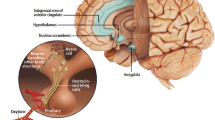Abstract
Women’s brains are different from men’s in very significant ways. Yet, on closer examination, there is nothing about those differences that suggests any reason why women should not be found at all levels of leadership in close to full proportion to men. Recent work in neuroscience demonstrates the variety, capacity and plasticity of the female brain. These characteristics make it fully equivalent to a male brain, and with the correct social environment, training and nurture, female brains ought to produce the same social performance outcomes. However, the human brain is wired in such a way that it resists significant personal change in the face of social obstacles. There are specific strategies women must adopt to get out of the middle management ghettos in which they are often stuck. If women understood their brains better, they could make them work for them to achieve more social and organizational power.
Access this chapter
Tax calculation will be finalised at checkout
Purchases are for personal use only
Preview
Unable to display preview. Download preview PDF.
Similar content being viewed by others
References
Adolphs, R. (2003). Cognitive neuroscience of human social behaviour. Neuroscience, 4, pp. 165–178.
Alexander, G. M. and Wilcox, T. (2012). Sex differences in early infancy. Child Development Perspectives, 6, pp. 400–406.
Angie, A. D., Connelly, S., Waples, E. P. and Kligyte, V. (2011). The influence of discrete emotion on judgement and decision-making: A meta-analytic review. Cognition and Emotion, 25, pp. 1933–1422.
Blum, D. (1997). Sex on the Brain: The Biological Differences between Men and Women. New York: Viking.
Eliot, L. (2010). The myth of pink and blue brains. Educational Leadership, November, pp. 32–36.
Jordan-Young, R. (2010). Brain Storm: The Flaws in the Science of Sex Differences. Cambridge, MA: Harvard University Press.
McCarthy, M. and Arnold, A. (2011). Reframing sexual differentiation of the brain. Nature Neuroscience, 14, pp. 677–683.
Semrud-Clikeman, M., J. G. Fine, J. Bledsoe, and D. C. Zhu. (2012). Gender differences in brain activation on a mental rotation task. International Journal of Neuroscience, 122, pp. 590–597.
Shoemaker, W. (2012). The social brain network and human moral behavior. Zygon, 47, pp. 806–820.
Singer, T. and Lamm, C. (2009). The social neuroscience of empathy. Annals of the New York Academy of Science, 1156, pp. 81–96.
Snyder, C. R. (2000). Handbook of Hope: Theory, Measures and Applications. San Diego, CA: Academic Press.
Editor information
Copyright information
© 2015 Bruce Hiebert
About this chapter
Cite this chapter
Hiebert, B. (2015). Women and Leadership: A Neuro-Social Point of View. In: Kumar, P. (eds) Unveiling Women’s Leadership. Palgrave Macmillan, London. https://doi.org/10.1057/9781137547064_1
Download citation
DOI: https://doi.org/10.1057/9781137547064_1
Publisher Name: Palgrave Macmillan, London
Print ISBN: 978-1-137-54704-0
Online ISBN: 978-1-137-54706-4
eBook Packages: Palgrave Business & Management CollectionBusiness and Management (R0)




